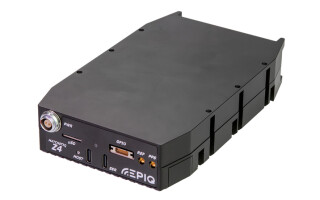UNIVERSITY UPDATE: The CHIPS Act and workforce development
StoryNovember 21, 2023

Louder for those in the back: Workforce development in the U.S. defense and industrial semiconductor industry, always an important issue, is even more critical today as big federal dollars for domestic production come online.
The CHIPS and Science Act of 2022 – a bipartisan law aimed at kick-starting chip manufacturing in the U.S. – is shaping up to be beneficial for the nation’s economy and, by extension, for the U.S. defense industry. In fact, Barbara McQuiston, the U.S. Department of Defense (DoD) Deputy Chief Technology Officer for Science and Technology, called the Act’s investment in the 14 technology areas it deemed most important “vital to maintain U.S. national security.”
“As we work on our own science and technology portfolio, we strategize on these investments as our allies and we work together along with industry and domestic partners to prioritize investments in these emerging areas,” McQuiston said in a DoD statement the day after the Act was signed into law.
So, while the new act sounds like a boon for the U.S. economy, remember this: All of these new chipmakers and equipment manufacturers need a workforce, plus the buyers of all these products need engineering talent. A 2020 report from the Semiconductor Industry Association noted that the U.S. manufactures just 12% of the world’s microchips, which was down from 37% in 1990. During those 30 years, hardware and semiconductor education has stayed static or declined.
Anecdotal evidence seems to back this up: At every defense or military trade show the last 10 years, what’s one of the most-discussed topics? The predominance of gray hair in the conference venue. For the CHIPS Act to succeed, and for the work spurred by the $52.7 billion U.S. manufacturing portion of the legislation to get underway, companies will need to find skilled engineers and technicians, with training ranging from two-year associate degrees to Ph.D.s.
Engineering schools in the U.S. are now racing to produce that talent. Universities and community colleges are revamping their semiconductor-related programs and entering into strategic partnerships with one another and with industry to train the people needed to run U.S. foundries.
Peter Bermel, an electrical and computer engineering professor at Purdue University, says that there were approximately 20,000 job openings in the semiconductor industry at the end of 2022: “Even if there’s limited growth in this field, you’d need a minimum of 50,000 more hires in the next five years. We need to ramp up our efforts really quickly.”
Bermel is the head of a microelectronics workforce development program called SCALE [Scalable Asymmetric Lifecycle Engagement], which recently received $19 million in funding from the DoD to strengthen existing efforts in key research areas and add new academic partners.
The SCALE program – funded by the DoD's Trusted and Assured Microelectronics program and managed by Naval Surface Warfare Center/Crane – resides at Purdue. It's a public/private/academic partnership of 18 universities (so far) and 48 defense-industry and government partners.
The most recent funding infusion from the DoD is aimed at boosting SCALE's academic and and workforce-related efforts in such areas as radiation-hardened microelectronics, artificial intelligence (AI), and supply chain. It also will go toward expanding student training, continuing education, and information dissemination. The funding includes $3.8 million for Purdue plus more for SCALE partner institutions Indiana University ($5 million) and Vanderbilt University ($1.6 million).
Several universities that have been added as SCALE partner institutions – including Morgan State University in Baltimore; the University of Tulsa; and the Microelectronics Security Training Center at the University of Florida, Gainesville – already had these subjects in their curricula and can expand these now that they are partners in the program.
“Now, more students interested in these technical areas have more opportunities to get involved and develop in-demand skills and experiences,” Bermel states. “And we add these new partner universities while broadening the participation of current partner universities in SCALE.”
Workforce development needs this kind of funding, Bermel says, especially to increase the number of trained people who can work on these technologies. “The expectation from multiple credible studies is there will be major shortages in the microelectronics workforce on a national scale if we do nothing. Part of the reason is that fewer U.S. students are going into undergraduate and graduate studies in high-tech areas.
“To achieve the goals of the CHIPS and Science Act, we need a deep pool of talented and motivated people who can do the work at the highest standards,” he continues. That pool of students and workers must include both technical expertise and as much diversity as possible “to draw skilled and capable individuals from all parts of the country to meet the need and to benefit communities throughout the United States,” Bermel adds.







